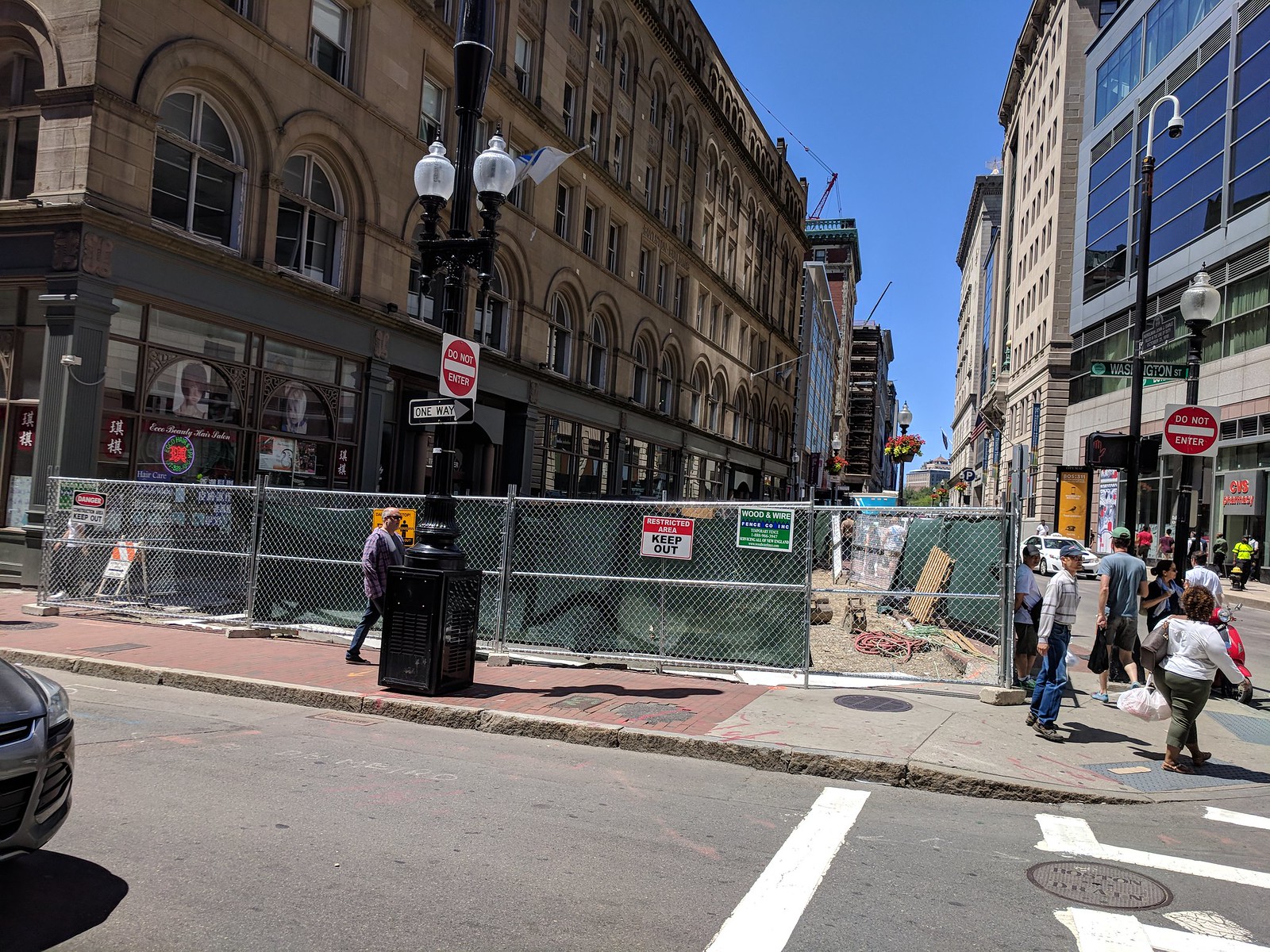BronsonShore
Active Member
- Joined
- Feb 13, 2014
- Messages
- 454
- Reaction score
- 1,349
For years it has gnawed at me that Boston has done so little to celebrate what could, arguably, be the most famous physical symbol of the Revolution in Boston. In terms of their actual respective roles in the fight for independence, the Liberty Tree was FAR more significant than the Liberty Bell.
That's why I was initially so excited . . . and then immediately disappointed, to see that construction is underway to turn Liberty Tree Plaza from this:

To this:

I'm sure there will be all sorts of historical background on those granite blocks, but let's be honest here: 99% of the people passing this plaza by will think it's nothing more than a place to sit and eat a salad.
It's a shame, because this should be a major site in the city. My fanciful idea was always to transplant one of the historic, John Hancock planted trees from the Common to this spot. Specifically, the one that sits smack dab in front of the State House, ruining what should be an iconic view from the mall:

This would have kept an actual living link to the Revolution alive at the site, along with aesthetically improving the Common. I also liked the idea of supplementing the tree with some sort of abstract sculpture, to keep it attractive and eye-catching in the winter.
Knowing nothing about horticulture, however, I've always suspected that transplanting such a mature tree would be impossible. Further, after doing a little digging, I think it's possible that the particular tree that blocks the view of the State House isn't one of the Hancock elms (it seems all the writing on the supposed Hancock trees refers only to the two trees that flank the Shaw Memorial, not this one).
What I'd like to see in the alternative, is something sculptural. Perhaps similar to what used to be in Danvers's Liberty Tree Mall (which was originally created for the New England pavilion of the 1964 World's Fair, and then subsequently placed on the Common before moving to the mall):


Sure, it might seem weird to put up a representation of a tree instead of an actual tree in celebration of what was, of course, an actual tree. But again, if you just plant a tree there, no one will realize it's supposed to be anything special. Besides, calling a tree that first sprouted after the year 2000 the Liberty Tree, is a little hokey and deceptive. The sculpture would be more honest.
That's why I was initially so excited . . . and then immediately disappointed, to see that construction is underway to turn Liberty Tree Plaza from this:

To this:

I'm sure there will be all sorts of historical background on those granite blocks, but let's be honest here: 99% of the people passing this plaza by will think it's nothing more than a place to sit and eat a salad.
It's a shame, because this should be a major site in the city. My fanciful idea was always to transplant one of the historic, John Hancock planted trees from the Common to this spot. Specifically, the one that sits smack dab in front of the State House, ruining what should be an iconic view from the mall:

This would have kept an actual living link to the Revolution alive at the site, along with aesthetically improving the Common. I also liked the idea of supplementing the tree with some sort of abstract sculpture, to keep it attractive and eye-catching in the winter.
Knowing nothing about horticulture, however, I've always suspected that transplanting such a mature tree would be impossible. Further, after doing a little digging, I think it's possible that the particular tree that blocks the view of the State House isn't one of the Hancock elms (it seems all the writing on the supposed Hancock trees refers only to the two trees that flank the Shaw Memorial, not this one).
What I'd like to see in the alternative, is something sculptural. Perhaps similar to what used to be in Danvers's Liberty Tree Mall (which was originally created for the New England pavilion of the 1964 World's Fair, and then subsequently placed on the Common before moving to the mall):


Sure, it might seem weird to put up a representation of a tree instead of an actual tree in celebration of what was, of course, an actual tree. But again, if you just plant a tree there, no one will realize it's supposed to be anything special. Besides, calling a tree that first sprouted after the year 2000 the Liberty Tree, is a little hokey and deceptive. The sculpture would be more honest.
Last edited:


